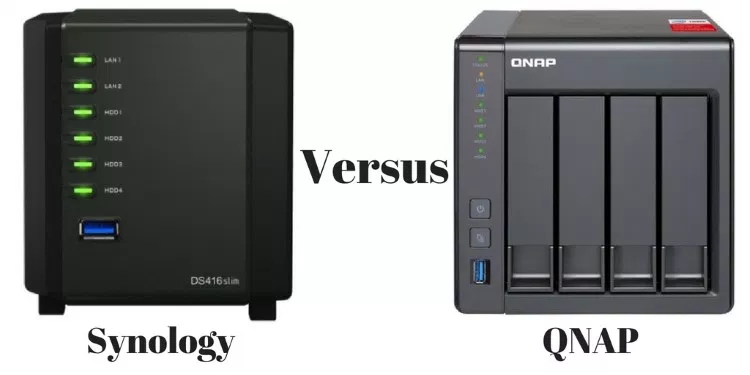When you go on the internet searching for the best NAS for home use, or for any purpose at all, there’s 99.99% chance that you’ll stumble upon at least a device from either of the manufacturers. Choosing the best NAS device isn’t entirely a task you can breeze through, particularly if you are a newbie, coupled with the fact that you wouldn’t want to purchase something you intend to use for years without it serving its purpose. Using the paragraphs under the headers below, we’ll compare both platforms under certain aspects and help choose the right NAS device that’s best for you – Synology DSM or QNAP QTS?
Synology vs QNAP: Plex Media Player support
Support for Plex Media Player is one of the uppermost reasons why people buy network attached storages. And of course, being among the best, both Synology and QNAP come with support for Plex Media Server. However, QNAP units will transcode your Plex Media Server more efficiently than Synology device would. This means if you’re mainly buying a NAS device to use with Plex Media Server, a QNAP product would be your best bet.
Operating system
Synology NAS storages come with the Diskstation Manager (DSM) operating system while QNAP, on the other hand, is based on an operating system called the QTS OS. The desktop setting/interface of DSM OS shares relatively high semblance with Apple’s MacOS while QNAP’s QTS OS can be compared to Windows or Android.
Interface
Per interface, Synology’s DSM operating system has an beginner-friendly interface. All the technical workings of the NAS device are tucked away (read: hidden) with the OS doing a huge part of the work for users in the background. QNAP on the other hand is for the technical-mind individuals who lives to take control of things in their own hands. A lot (more than half) of the technical information of the QTM-powered NAS storage are easily accessible as they are at the very front of the interface. This allows users easily accessible storage information, file sizes, real-time CPU usage, device temperature among other information with just the click of a button. Users can also easily tweak settings to their preferences.
Compatibility
This refers to support for applications. Synology comes with a lot of built-in/first-hand/native applications unlike QNAP which comes with only a few as it is designed to fucntion with third-party applications — a lot of them. Synology boasts of useful office applications like Documents, Slides, and Spreadsheet. There are also communication-focused apps like Synology Chat and MailPlus. Synology Drive is another useful app while the facial recognition Synology Moments app is equally a great addition.
Which one is best for you?
Years back, Synology used to be very far ahead of QNAP in terms of features, app support, hardware etc. Now, QNAP can be safely placed side-by-side with Synology as it is closing the competitive gap. Both NAS storage support third-party apps, file storage, smartphone connectivity, cloud synchronization, as well as other basic features needed on a NAS to manage and configure installed drives etc. The interface is however a major difference, which is why you should opt for Synology if you are a newbie user or buying a network-assisted storage-wise the first time. If however you are familiar with how a NAS works and you need to get things done faster as well as freely install unofficial third-party apps, the powerful hardware of QNAP will come in handy. On the software side though, both are just as good as each other.

